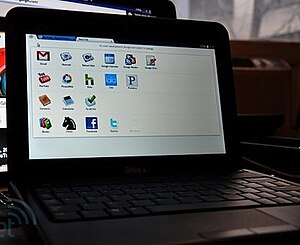11 years ago, Mp3.com provided unlimited cloud music storage for free. You’d just put your CD in the CD reader and all the songs would instantly beam to your account, no uploading even needed as long as the CD was in their cloud storage. It was awesome. Mp3.com got sued by all the record companies in the world, and lost because Universal insisted not to make an out of court settlement like all the other labels did, so Universal got the Mp3.com domain and basically destroyed all the genius that was there and did nothing with the domain these past 11 years. Mp3.com was much more than a cloud music storage service, that was just one of their last features. Their main strength was in providing a platform for all independent artists to release their music, get fans, make money selling downloads, streams, even on-demand burned CDs and merchandize. Mp3.com would give $1 Million per month from their ad revenue to the artists based on the popularity of their free mp3 downloads. It was awesome, and it could have gotten so much better (it was too hard to find good music, they should have done an automatic recommendations engine based on user ratings). Record companies saw a threat in Mp3.com becoming the big independent record label for all artists, turning all artists into independent artists, thus they saw an opportunity in sueing them for their music locker service, as an excuse to shut it down and delay the whole independent music revolution for another decade.
Michael Robertson, the enterpreneur behind Mp3.com, did a whole bunch of other cool stuff since. Including Gizmo5 bought by Google to add VOIP SIP features to Google Voice (I presume.. internationalization of Google Voice is still hopefully coming up), the Linspire Linux OS (formely Lindows, they had to change the name because of a Microsoft lawsuit) was online with an app store and 40’000+ apps 4 years before the Apple “appstore”, he also redid his Music locker idea at Mp3tunes.com
While I wish Google, Amazon, Apple all the best in licencing access to unlimited music streaming service and combine it with music locker for $1/song purchased songs, here’s what I would like these cloud storage for multimedia file services to be like:
1. Mp3 files, DivX files, MKV files, that are common, must be free to store. As the cloud service only needs to store one of each file, if you upload a pirated Mp3, DivX, MKV, Flac, then it should recognize it and not charge you for the storage. This way, people could beam Terrabytes of music, movies and TV shows to their cloud storage and not have to pay for any storage.
2. No need to upload the file if an uploading app recognizes the file as already being on the cloud. Then let it just beam the file to the cloud storage, and provide unlimited streaming from there.
3. Firm unbreakable promise that the cloud service providers are not going to hand over the index of all the pirated files to RIAA and MPAA. What would be the point in showing those copyrights holders what you pirate.
4. Cloud services need to provide one-click export/copy to another cloud service, meaning they can talk directly to each other, even share the files efficiently across all the cloud services.
5. The cloud service providers, perhaps with help from the Government, need to implement global content subscription plans, around $10 per month should give unlimited legal access to all Music, Movies, TV Shows, Ebooks and Applications. If everyone in Europe and the USA paid $10 per month, that would amount to $60 Billion per year, plenty enough to pay for all the content creators directly, no DRM needed, no separate subscription plans needed, one plan should provide legal access to everything, and piracy can get legalized.
6. The cloud storage services can smartly integrate with P2P networks if needed, to facilitate mass distribution of all the huge files. Eventually do something similar to Wuala, or they could simply implement BitTorrent and smart BitTorrent caching systems in cooperation with all the ISPs. The idea is this, the cloud distribution system must be able to manage that 1 million people want to download the same 4.5GB 720p MKV movie file at full speed all at the same time, eventually download it in a way it can be played back while downloading (p2p streaming).
What would you like to see the cloud service providers do to provide better cloud storage for multimedia file streaming?
Related articles
- Amazon launches cloud storage service (theglobeandmail.com)
- Amazon Cloud Player streams music from your free Cloud Drive to Android and the desktop (downloadsquad.switched.com)
- Amazon beats Apple and Google with cloud music launch (telegraph.co.uk)
- Amazon’s New ‘Cloud Drive’: Your Music, Everywhere You Go (wired.com)














